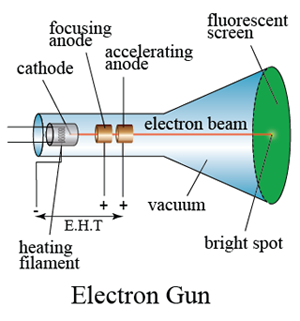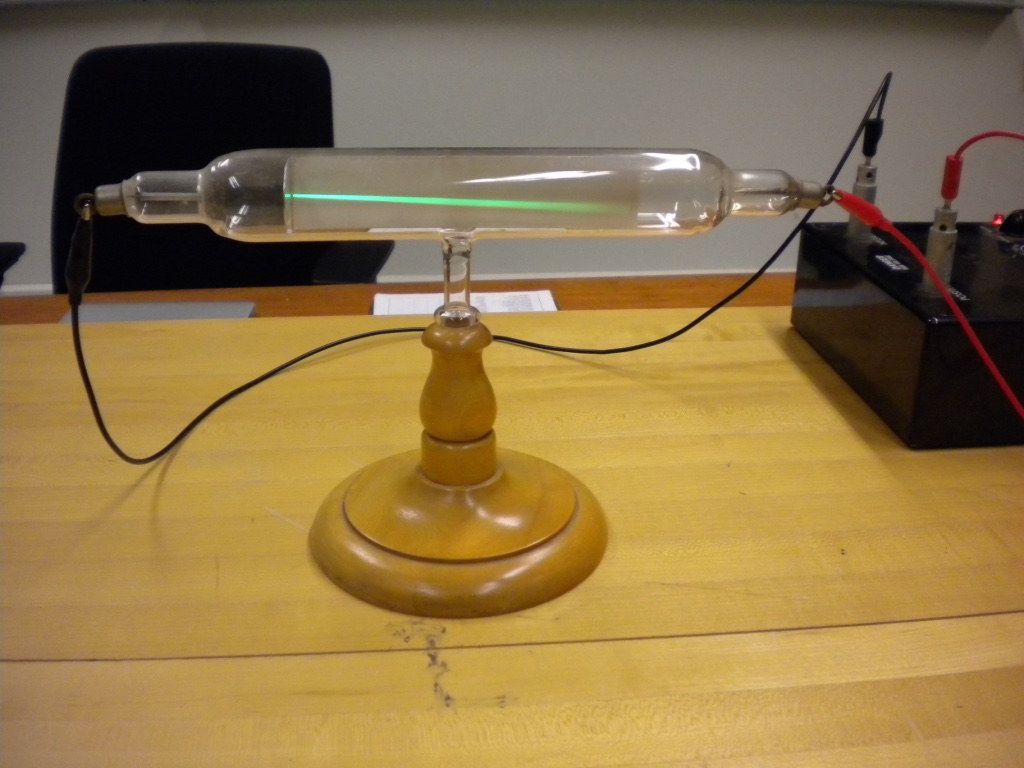

This gun mainly includes a heater, a grid, cathode, and anodes like accelerating, pre-accelerating & focusing. The main function of the electron gun is to emit the electrons to form them into a ray. These actions are autonomous from each other and thus the ray may be located anyplace on the monitor. The vertical deflection plate will turn the ray up & down whereas the horizontal ray moved the electrons beams from the left side to the right side. The main function of this electron gun is used to generate a focused electronic ray that speeds up to high frequency. This tube includes the electron gun as well as the electrostatic deflection plates. The CRO is the vacuum tube and the main function of this device is to change the signal from electrical to visual. The construction of CRO includes the following. It moves to make the necessary waveform of the input signal. The spot on the phosphor monitor turns due to the effect of these two electrostatic forces which are mutually perpendicular. A Cathode Ray Oscilloscope applies the electrostatic energy on the electron ray from two vertical ways.

Once an electron ray hits a phosphor face, then it makes a bright spot on it. The CRO working principle depends on the electron ray movement because of the electrostatic force. Hence the horizontal deflection starts at the same point as the input signal. If the electron beam is detected in the X-axis and the Y-axis a trigger circuit is given for synchronizing these two types of detections.

Thus, it can amplify the signal to a level that will be provided the deflection of the electron beam. The signals are passed from the vertical deflection plate through the vertical amplifier.
#Cathode ray generator#
Just before detecting the electron beam on the screen in the horizontal direction which is in X-axis a constant time-dependent rate, a time base generator is given by the oscillator. The horizontal and vertical plates are placed between the electron gun and the screen, thus it can detect the beam according to the input signal. The normal voltage supply is necessary for other control units of the oscilloscope. A high voltage is required for the cathode ray tube to speed up the beam. The low voltage is used for the heater of the electron gun to generate the electron beam. Here we will use high voltage and low voltage. This provides the power supply circuit of the oscilloscope. To complete this task we need various electrical signals and voltages.

By detecting the beam above the screen in reply to the electrical signal, the electrons can act as an electrical pencil of light which produces a light where it strikes. Thus, the screen produces a visible spot where the electron beam strikes with it. In an oscilloscope, the CRT produces the electron beam which is accelerated to a high velocity and brings to the focal point on a fluorescent screen. The CRO recruits the cathode ray tube and acts as a heat of the oscilloscope. The following block diagram shows the general-purpose CRO contraction. Cathode Ray Oscilloscope Block Diagram of CRO By seeing the waveform, we can analyze some properties like amplitude, frequency, rise time, distortion, time interval, and etc. The oscilloscope observes the changes in the electrical signals over time, thus the voltage and time describe a shape and it is continuously graphed beside a scale. In the early days, it is called as an Oscillograph. Very visible even in large lecture halls it doesn't need any additional aids.The cathode ray oscilloscope is an electronic test instrument, it is used to obtain waveforms when the different input signals are given. The fluorescent screen is ideally suited for electrons and renders a very bright image of the path of the cathode rays. This Crookes tube uses the same power supply and induction coil as the Maltese Cross tube, and the same Alnico magnet for deflecting the beam. Please use gloves and safety glasses when handling this fragile vacuum tube. Crookes tube showing fluorescent screen and cathode aperture Moving the magnet in from behind the screen deflects the beam up or down moving the magnet in from the top deflects the beam away from or into the screen.įigure 1. The shape of the beam and the inclination of the screen means that the path of the electrons impinges on the screen and can be seen for the length of the tube. This Crookes tube has an anode and cathode at opposite ends of a cylindrical tube, with a horizontal slit near the cathode and a vertical fluorescent screen running the length to the anode (see figure 1).


 0 kommentar(er)
0 kommentar(er)
